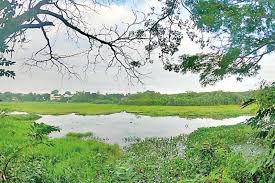
The wetlands of Colombo, once described as the “lungs and kidneys” of Sri Lanka’s capital, are undergoing a much-needed restoration. These critical ecosystems, long neglected and polluted, are now being revived to manage floods and enhance biodiversity. Experts believe Colombo’s efforts could offer valuable lessons for the rest of the world.
Once used as trash dumps, the wetlands are now being transformed into flood-buffering parks. While progress has been made, the ecosystems remain threatened by ongoing urban development.
A Troubled History
Sri Lanka’s ancient kingdoms thrived on a well-managed wetland system, where the marshes were used for transportation and agriculture. However, during British colonial rule in the late 18th century, the wetlands were drained to build housing and businesses. The degradation worsened after independence in 1948, as wetlands were claimed for housing and became dumping grounds for food waste, chemicals, and sewage.
The turning point came after a series of devastating floods in 2010, which affected nearly 700,000 people and even submerged the country’s parliament. The floods highlighted the wetlands’ role as a natural flood buffer, with about 40% of floodwater draining into these areas. Besides mitigating floods, wetlands also help sequester carbon, purify the air, and regulate temperatures.
A New Approach
In 2016, the government introduced a new wetland management strategy that aimed to integrate wetlands into urban planning, halt further degradation, and engage local communities in conservation efforts. Colombo now boasts four wetland parks, along with other recreational areas linked by wetlands. While Colombo’s recent history serves as a cautionary tale of prioritizing urban development over vital natural resources, the wetlands are poised to become one of the city’s greatest assets.
With flooding becoming more severe due to climate change, coastal erosion, and urbanization, the restoration of Colombo’s nearly 5,000 acres of wetlands offers hope. If the city can harness the wetlands’ ability to reduce flood damage, its success could serve as an example for cities worldwide facing similar challenges.
The revival of Colombo’s wetlands is already making an impact, with residents taking sunset walks through mangrove forests and children excitedly spotting wildlife. These signs show that wetlands are once again becoming a cherished part of Colombo’s identity.
Courtesy: The Week – https://theweek.com/environment/colombos-wetlands-how-the-lungs-of-sri-lankas-capital-are-being-restored




